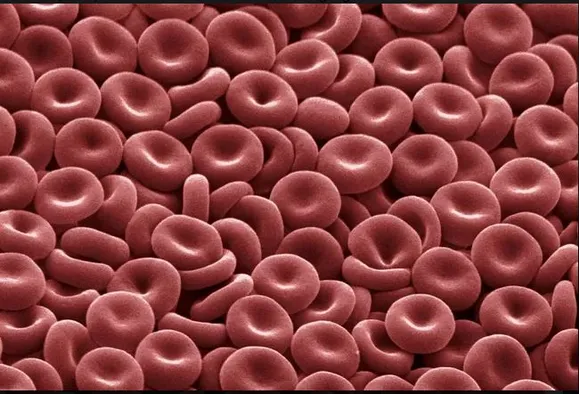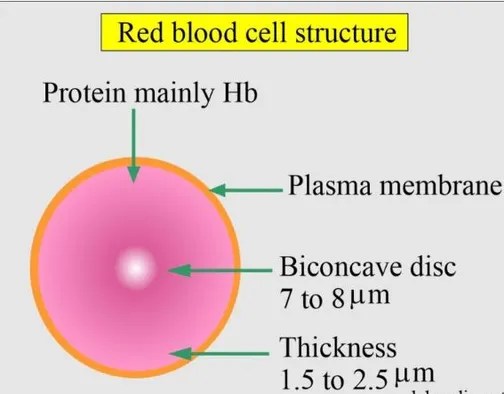There are three types of living cells in blood: red blood cells (or erythrocytes), white blood cells (or leukocytes), and platelets (or thrombocytes). The main function of RBC is transporting oxygen from your lungs to your body’s tissues.
Red Blood Cells
Blood has three main functions: transportation, regulation, and protection.
Our erythrocytes, or red blood cells, are the most abundant cell type in the human body. Additionally, erythrocytes are anucleated, which means they don’t have a nucleus. This extra room allows for more hemoglobin to be stored in our red blood cells.
Hemoglobin allows oxygen to be transported around our body to our tissues and organs (and carbon dioxide to be taken away). Hemoglobin is largely comprised of iron, which when combined with oxygen; gives blood its red color. Additionally, blood helps cycle nutrients and hormones throughout our bodies.

Blood also helps us maintain homeostasis by regulating our internal body pH and temperature as well as how much water is in our bodies at a given time. Plasma, our connective tissue matrix, is about 90% water.
Blood is also vital in protecting our bodies. Blood loss is controlled with clotting mechanisms, and white blood cells provide an immune response.
What are red blood cells?
Red blood cells, also known as erythrocytes, deliver oxygen to the tissues in your body. Oxygen turns into energy and your tissues release carbon dioxide. Your red blood cells also transport carbon dioxide to your lungs for you to exhale.
Red blood cells are responsible for transporting oxygen from your lungs to your body’s tissues. Your tissues produce energy with the oxygen and release a waste, identified as carbon dioxide. Your red blood cells take the carbon dioxide waste to your lungs for you to exhale.
Do red blood cells carry oxygen?
Yes, a red blood cell takes oxygen from the lungs to the tissues in your body. Your cells use oxygen to produce energy.
Red blood cells develop in your body’s soft bone tissue (bone marrow) and release into your bloodstream after they fully mature, which takes about seven days.
Red blood cells have a unique structure. Their flexible disc shape helps to increase the surface area-to-volume ratio of these extremely small cells. This enables oxygen and carbon dioxide to diffuse across the red blood cell’s plasma membrane more readily.
Red blood cells contain enormous amounts of a protein called hemoglobin. This iron-containing molecule binds oxygen as oxygen molecules enter blood vessels in the lungs. Hemoglobin is also responsible for the characteristic red color of blood.

Unlike other cells of the body, mature red blood cells do not contain a nucleus, mitochondria, or ribosomes. The absence of these cell structures leaves room for the hundreds of millions of hemoglobin molecules found in red blood cells. A mutation in the hemoglobin gene can result in the development of sickle-shaped cells and lead to sickle cell disorder.
What is a normal red blood cell count?
Normal red blood cell counts differ based on the individual:
- Men: 4.7 to 6.1 million red blood cells per microliter of blood.
- Women: 4.2 to 5.4 million red blood cells per microliter of blood.
- Children: 4.0 to 5.5 million red blood cells per microliter of blood.
If your count is outside of these ranges, it is either too high or too low and your healthcare provider will offer additional tests or treatments.
What are common treatments for red blood cell disorders?
Treatment for red blood cell disorders varies based on the diagnosis and severity of the condition. Treatment ranges from:
- Taking vitamins.
- Eating a well-balanced diet.
- Treating existing medical conditions.
- Getting a blood transfusion.
What are common tests to check the health of my red blood cells?
A complete blood count (CBC) test examines how many blood cells (red and white) are in your blood. A medical professional will sample your blood to count how many red blood cells are present.

